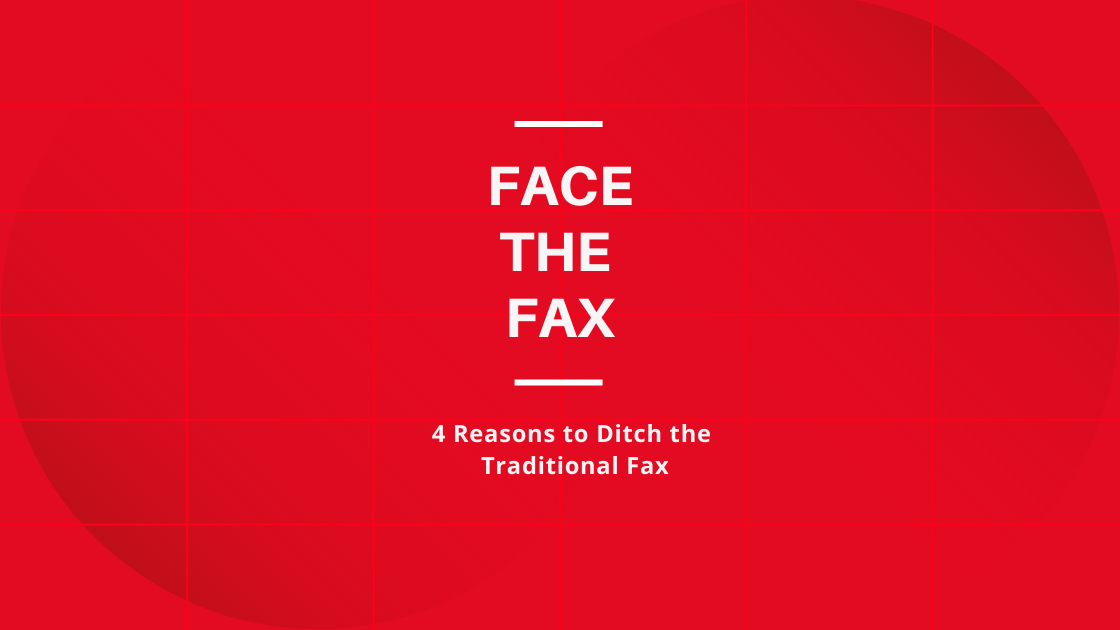Products That Matter
Face the Fax:
4 Reasons to Ditch the Traditional Fax
by Christopher S. Garner
October 10, 2020
Although EHR technology has been around since the 60’s, preliminary estimates in 2008 suggested that almost 62% of physicians in the U.S. were still storing their patient data in folders and file cabinets. Thanks to over $25 billion in incentives from the Obama administration, that number has been reduced to under 15% today, but now a new health IT adoption challenge looms.
With 75% of all medical communication still occurring via fax, what kind of incentives will be necessary to encourage hospitals to phase out of a system that requires clinicians to print digitized patient records in order to share them? Here are 5 reasons cloud faxing may be the solution that incentivizes healthcare enterprises to face the fax.
- Cloud faxing provides enhanced security
Familiar is what is known. Familiar is comfortable. And for that reason, what is familiar to us can suppress our desire for growth, even when more secure and user-friendly options exist. The familiarity of the fax is no different. Traditional faxing machines leave sensitive information 900 words sitting out in the open, where it can be viewed, handled, or even taken by unauthorized persons. Faxes are also frequently sent to the wrong place because of number input errors. In one extraordinarily bizarre case, a fax was mistakenly sent from a medical center to NASA, prompting the FBI to get involved.
By routing faxes electronically, users can add a layer of privacy and security to the document sharing process, which means no more sitting paper, no more manually inputting every fax number, and encryption at every stage. Cloud faxing allows users to automate outbound faxes or restrict recipient lists, or both. Organizations with cloud fax also have the ability to track, record, and manage all inbound and outbound faxes, giving them an immaculate audit trail for reporting purposes and complete control of all faxing related activities in any department. This added level of security will prove invaluable for organizations that must adhere to strict document security standards.
- Cloud faxing improves staff productivity
The traditional fax is a hassle for employees. It involves a process that frustrates hospital staff to no end and wastes precious time throughout the workday. And it’s no mystery why. Traditional faxing requires end users to print every document needing distribution, physically go to a fax machine, deal with busy phone lines, wait for confirmation, and manually retry failed send attempts. Not to mention the inconvenience of dealing with paper jams and ink issues. Conversely, cloud faxing allows users to send and receive documents from any computer, without having to fight a printer or even leave their office chair. This removes the hassle of exchanging documentation at the enterprise level and, more importantly, enables staff to focus their time and effort on patient needs instead of processes.
- Cloud faxing offers virtually unlimited scalability
Part of the reason traditional faxing limits users in terms of scalability is because it is built on old methods of data transfer, which are revealed in their need for a phone line and dial-tone. There’s always a threshold in terms of data sharing capabilities and number of fax machines. Inevitably, the more data that needs to be shared, the more machines that must be integrated into the system. With the traditional fax, this necessitates investing more capital into physical machines, then making space for those machines and ensuring the location achieves maximal convenience for each employee in every department. Thus, the limits of traditional faxing will always be determined by phone line speeds and number of physical machines.
Cloud faxing, on the other hand, empowers organizations with the ability to implement new faxing numbers almost instantaneously – without investing capital or time into implementing new equipment – and is limited only by internet bandwidth and storage, which are virtually unlimited. These advantages are possible because faxing via the cloud is a digital service accessible from any computer with internet access. It effectively untethers staff from the process of traditional faxing and frees enterprises to grow sharing capabilities effortlessly as needs arise.
This offers organizations a range of scalability that can meet the storage demands and ever-faster pace of paperless data exchange in the Digital Age.
- Cloud faxing reduces costs
The real cost of traditional faxing is time. Traditional fax machines make document exchange a drawn out process, and maintaining them can make the process linger on even longer. It’s a constant, nagging inconvenience to your wallet. Like a college student, traditional faxing always needs more time to prepare and more money for Top Ramen and energy drinks. More paper. More ink. More troubleshooting random issues and replacing faulty parts. It all consumes time and money that could be used more productively elsewhere.
Sweet and simple, cloud faxing allows organizations to work with a consistent monthly fee and better manage the costs associated with exchanging clinical and financial documentation.
Conclusion
Any number of factors influence today’s enterprises into sticking with the familiarity of the traditional fax. But, for an emerging generation of healthcare providers and executives keeping their eyes on progress, a square-off is imminent. When the bell sounds and opponents converge, cloud faxing will provide a way for those enterprises to face the fax, and win.
You Might Also Like:
Share..


